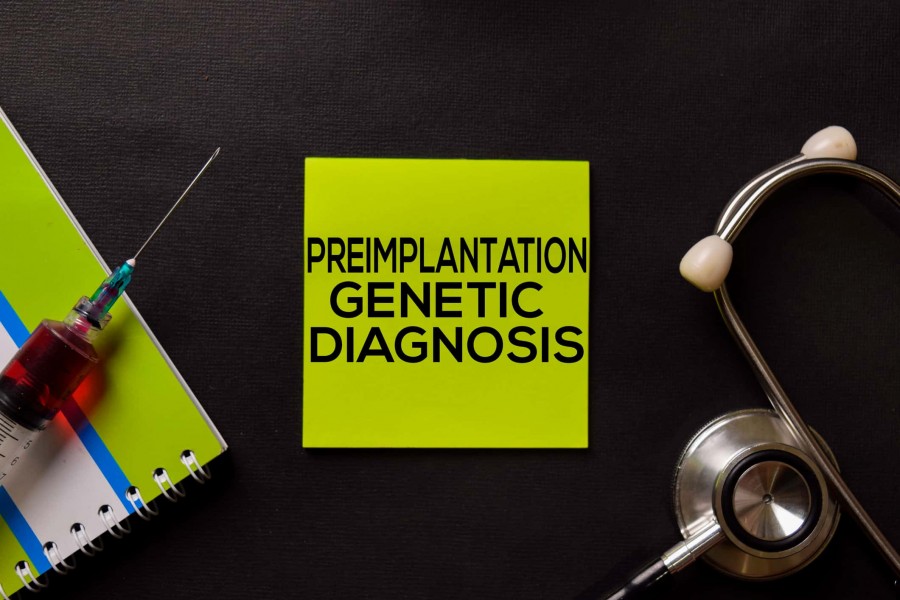The selection of the best quality embryos to transfer during in vitro fertilisation (IVF) is crucially important to maximise treatment success. Quality assessment is largely based on morphological features, such as the number and appearance of cells. However, these qualitative measurements are not the most reliable, as almost two-thirds of couples still do not get pregnant even after transferring “top grade” embryos. What could be going on underneath the perfect looking cover? Only more advanced technologies like preimplantation genetic testing for aneuploidy (PGT-A) can tell, or can it?
The use of PGT-A has a strong appeal to both patients and clinicians as it seems to offer a whole lot more information that enables a better prediction on the quality of an embryo. This will improve the probability of a successful pregnancy, while minimising the risk of failed implantation and miscarriages. Sounds like the game changer, doesn’t it?
Since last year, the opposing voice against PGT-A has been intensifying. If you are a patient about to embark on an IVF journey, knowing whether PGT-A is helpful for you is important. Now, let’s summarise the problems with PGT-A that have raised concerns in the past year.
The problem with wasted embryos
The most controversial concept around PGT-A that patients might not fully appreciate is that PGT-A does not improve the quality of embryos, rather, it eliminates “bad embryos”. What this means is that in an extremely unlucky situation, PGT-A may indicate that all of the fertilised embryos contain abnormal genetic materials, and therefore, none is suitable for transfer. While this may be an extreme example, the reality isn’t that far off as a large proportion of embryos are labelled “abnormal/aneuploid” and discarded.
But the problem is, are aneuploid embryos destined to fail? One 2019 study performed a worldwide survey of 151 IVF centres to find out if such “abnormal” embryos have indeed led to high treatment failures. Surprisingly, 49.3% cycles resulted in ongoing pregnancies or live births, and miscarriages are rare (9.3%). These data came as a shock – if the so-called “abnormal” embryos can lead to healthy babies, then are they really abnormal? For older patients who may only have less than a handful of embryos, even one lost embryo could make the difference between carrying home a baby or not.
In 2020, the debate around PGT-A has really intensified. First was one article published in the prestigious journal Human Reproduction titled “Hidden in plain sight: the overstated benefits and underestimated losses of potential implantations associated with advertised PGT-A success rates”. In this article, the author argued that PGT-A has become highly marketed as a mature and established diagnostic technique with overstated benefits. But in reality, the technology is still in its early days and the embryo wastage problem is hidden in plain sight.
The calculated efficacy of PGT-A is inflated as it does not take into account the loss rate, which was estimated to be as high as 52.8%. While PGT-A may result in increasing implantation rates, there are now fewer embryos left!
The problem with add-ons and embryo mosaicism
Following this paper, the International Do No Harm Group in IVF (IDNHG-IVF) also published similar concerns on the journal of Reproductive biology and endocrinology. The authors pointed out that PGT-A comes with cumulative add-ons including extended blastocyst culture, embryo cryopreservation, biopsy, and the disposal of what the procedure reports as abnormal embryos. In addition to the problem of embryo wastage, these increased add-ons could add to the potentially negative treatment outcome and financial burden. For example, not all embryos can survive the biopsy, freezing and thawing procedures.
Perhaps a bigger problem is embryo mosaicism, which is the concept that not all cells in the same embryo have the same genetic makeups. Since biopsy for PGT-A generally only takes a few cells out of the embryo, the result may not necessarily reflect what’s going on in the rest of the embryo. Interestingly, transfers of mosaic embryos have given rise to healthy babies. In fact, the majority of preimplantation human embryos have been found to be mosaic, containing both normal and abnormal cells.
In a landmark paper using mosaic mouse embryo models, the researchers found that preimplantation embryos have a certain level of self-correction. The mosaic embryos have full developmental potential, provided that they contain sufficient cells with normal chromosome numbers. Therefore, discarding an embryo just because one of its cells is deemed “genetically abnormal” seems short-sighted.
So when is the use of PGT-A justified?
If a patient has a specific chromosomal defect in the family, PGT-A may help avoid an unbalanced karyotype. In older patients whose eggs are known to have higher aneuploidy and miscarriage rates, PGT-A may be reasonable given the patients have a decent number of embryos available. But unfortunately, this is usually not the case given the sharp decline of ovarian reserve in patients older than 35 years old. Until there are clearer recommendations regarding the use of PGT-A, patients, clinicians and genetic counsellors are encouraged to discuss the potential risks and benefits of PGT-A in a personalised manner.
